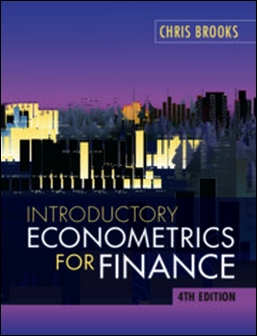書籍分類

Introductory Econometrics for Finance 4/e
作者:Chris Brooks
原價:NT$ 1,650
ISBN:9781108436823
版次:4
年份:2019
出版商:Cambridge University
頁數/規格:728頁/平裝彩色
參考網頁:Introductory Econometrics for Finance 4/e
版次:4
年份:2019
出版商:Cambridge University
頁數/規格:728頁/平裝彩色
參考網頁:Introductory Econometrics for Finance 4/e
內容介紹 目錄 作者介紹
- Description
- A complete package for finance students that assumes no prior background in econometrics
- The fundamentals have been broadened into two introductory chapters (one covering mathematics and the other basic statistics) to provide a strong foundation for those new to the subject
- Includes full web support for students and instructors, with datasets, additional chapter questions (with answers provided), lecture slides, support for popular statistical software packages and links to sources of financial data and articles
- Includes worked examples on how to conduct events studies and the Fama–MacBeth method, two of the most common empirical approaches in finance, ensuring that students are well-prepared for econometrics in practice
A complete resource for finance students, this textbook presents the most common empirical approaches in finance in a comprehensive and well-illustrated manner that shows how econometrics is used in practice, and includes detailed case studies to explain how the techniques are used in relevant financial contexts. Maintaining the accessible prose and clear examples of previous editions, the new edition of this best-selling textbook provides support for the main industry-standard software packages, expands the coverage of introductory mathematical and statistical techniques into two chapters for students without prior econometrics knowledge, and includes a new chapter on advanced methods. Learning outcomes, key concepts and end-of-chapter review questions (with full solutions online) highlight the main chapter takeaways and allow students to self-assess their understanding. Online resources include extensive teacher and student support materials, including EViews, Stata, R, and Python software guides.


